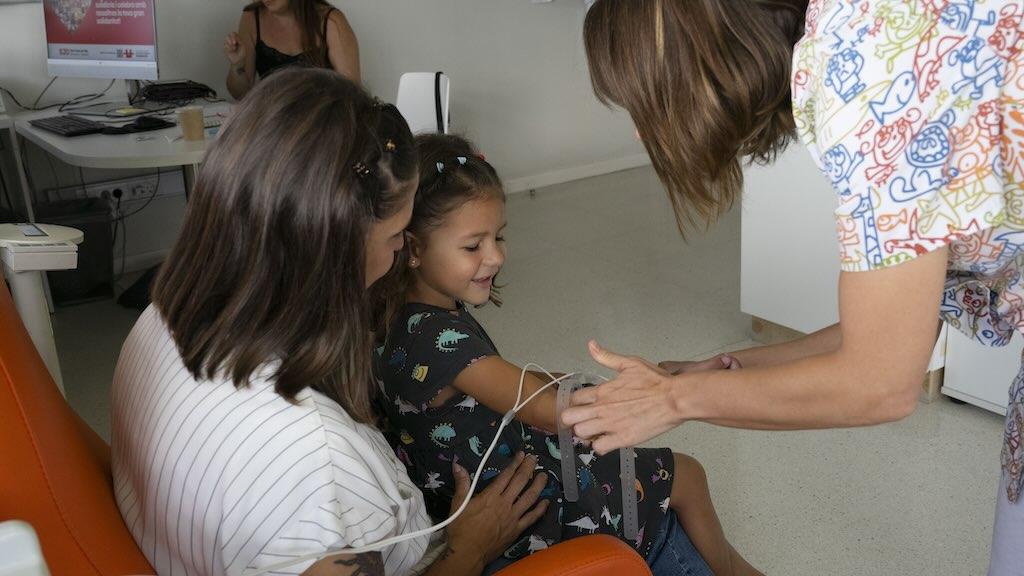SJD Barcelona Children's Hospital offers new treatment to children between two and five years old with cystic fibrosis

This drug, already in use on older patients since 2021, corrects the dysfunctional processes caused by a genetic mutation.
The SJD Barcelona Children's Hospital has started treating two- to five-year-old children with cystic fibrosis, whose disease is caused by an F508del mutation in the CTFR gene. The drug is a high-efficiency modulator that has already had excellent results in patients over six years old.
Use of this modulator drug—containing the active ingredients ivacaftor, tezacaftor and elexacaftor—for this age group began this summer, when the Ministry of Health approved it for treating cystic fibrosis caused by certain gene mutations.
‘Being able to treat the cause of the disease so early will change the game. Being a degenerative disease that impacts several organs, this drug will allow us to treat patients when they are still relatively or completely healthy,’ ensures Maria Cols, Head of the Cystic Fibrosis Unit. ‘In this way, we will avoid unnecessary damage, thereby ensuring a life expectancy on par with that of the rest of the population.’
Cystic fibrosis is the most frequently occurring recessive—and potentially lethal—disease in the Caucasian population, with an incidence rate of one case in every 6,500 live births. It is caused by a genetic mutation in the 7q31.2 chromosome, causing a dysfunctional CFTR protein, which is the protein in charge of regulating the viscosity of mucous in the body.
When this protein is dysfunctional, mucous and secretions are much thicker, making it harder for the affected individual to expel them. This leads to build-up, with mucous blocking various channels and causing damage to different organs.
If not treated early, affected children can suffer from several health issues: recurrent or chronic respiratory infections that can damage the lungs, requiring transplant upon reaching adulthood; pancreas failure; malnutrition; abnormal metabolism, etc.
Cystic fibrosis has been included in the Catalonia neonatal screening programme since 1999. As soon as they are diagnosed, affected children are enrolled in a close monitoring programme and begin to undergo various personalised treatments in a specialised, multidisciplinary unit.
The SJD Barcelona Children's Hospital boasts the Cystic Fibrosis Unit, a leading facility in the diagnosis and management of this disease in the pediatric population. It is one of three units involved in the neonatal screening programme in Catalonia, also being a monitoring and treatment facility for diagnosed patients.
This unit is made up of pediatricians specialising in Pulmonology, Gastroenterology and Nutrition, Hepatology, Rehabilitation, ENT, Endocrinology, Psychology, Nephrology, Social Work and Pharmacy, among others.
In 2011, the first CFTR modulator treatment was launched, demonstrating that the function of the protein involved in mucous and secretion regulation could be corrected.
‘The first modulator drug was indicated for very few genetic mutations, which were rather infrequent in our country. There are more than 2,000 variants of the CFTR gene, and more than 300 of them can result in cystic fibrosis. What is really quite significant is the ability to use new generations of CFTR modulators that have been discovered in recent years, which can help the majority of our patients’, highlights Cols.
‘But we cannot forget that these new treatments have no response in around 25% of the patients at our units. That is why research into a universal cure for the disease is still a top priority’, she adds.




